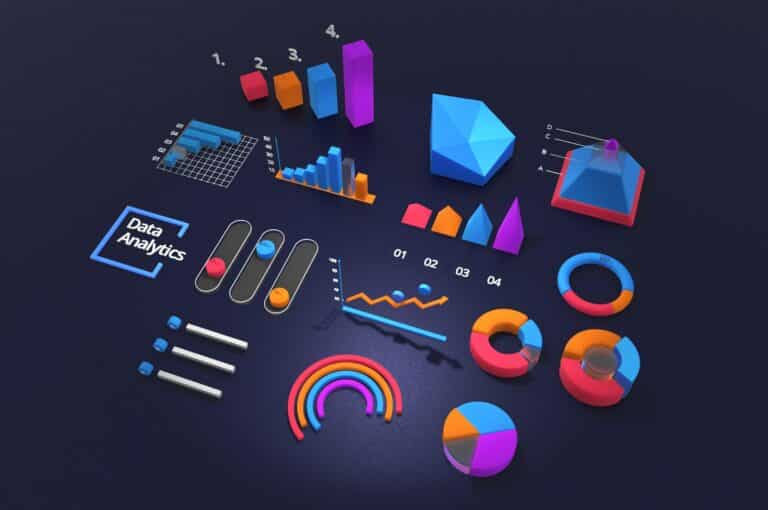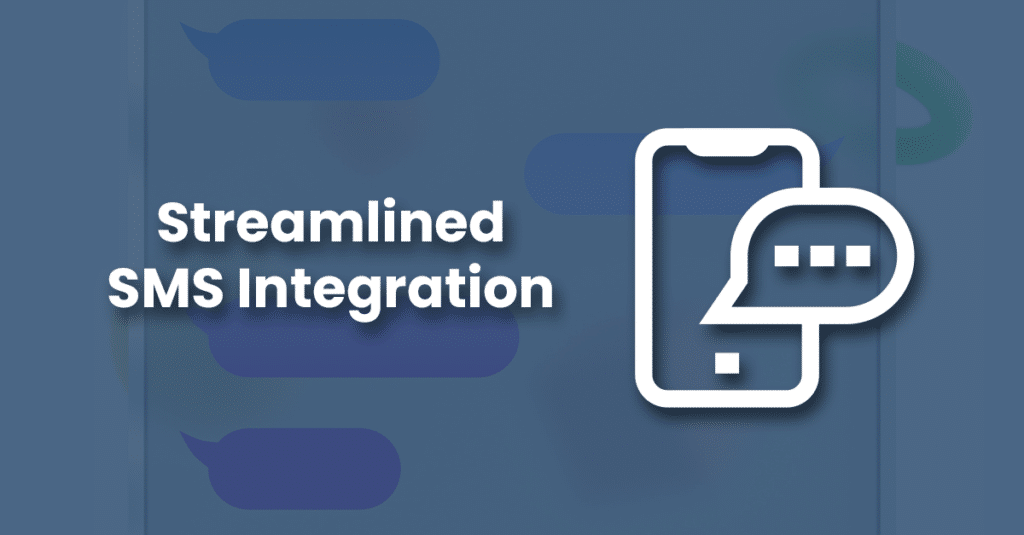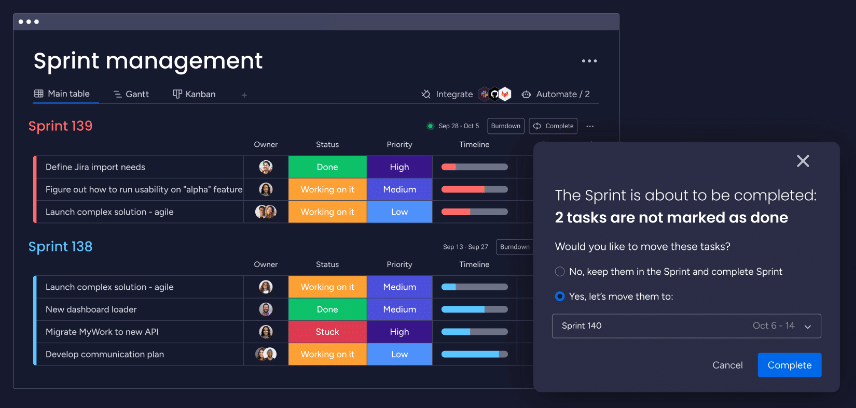Introduction
In the dynamic realm of B2B digital marketing, the calculation and understanding of Return on Investment (ROI) stand as crucial determinants of success. This blog post dives into the world of ROI measurement best practices in B2B digital campaigns, offering insights and strategies essential for marketers and business leaders alike.
The practice of measuring ROI in B2B digital campaigns is not just about crunching numbers; it’s an art that balances analytics with strategic foresight. In this increasingly digitalized business landscape, the ability to precisely gauge the effectiveness of online marketing efforts can make the difference between a thriving business and one that falls behind. ROI measurement best practices in B2B digital campaigns provide a roadmap for companies to evaluate their marketing endeavours, ensuring that every dollar spent is an investment towards future growth.
In the upcoming sections, we’ll explore how to effectively measure ROI in B2B digital campaigns, focusing on best practices that can optimize your marketing efforts. From setting realistic goals to leveraging advanced analytics, this guide will equip you with the knowledge to turn data into actionable insights.
As we delve into the intricacies of ROI measurement best practices in B2B digital campaigns, remember that the goal is to create a sustainable and profitable marketing strategy. By understanding and applying these best practices, your B2B digital campaigns can achieve greater impact, driving not just immediate gains but long-term business growth.
Stay tuned as we unfold the layers of ROI measurement best practices in B2B digital campaigns, paving the way for more informed, effective, and profitable marketing decisions.
Understanding ROI in the B2B Digital Context
Grasping the concept of ROI in B2B digital marketing is pivotal for ensuring the success of any marketing initiative. This section delves into defining ROI specifically in the B2B context and addresses the nuances that distinguish it from B2C marketing.
ROI in B2B vs. B2C
While the basic premise of ROI – measuring the return on investment – remains consistent across B2B and B2C marketing, the way it’s calculated and the factors influencing it differ significantly. B2B transactions typically involve longer sales cycles, higher order values, and multiple stakeholders, which add layers of complexity to an ROI calculation. Understanding these differences is crucial for developing an effective ROI measurement strategy in B2B digital campaigns.
Quantitative and Qualitative ROI
In B2B digital marketing, ROI isn’t solely about tangible, financial returns; it’s also about intangible assets such as customer relationships, brand authority, and market influence. Qualitative aspects like customer satisfaction and brand perception play a significant role in long-term business success. Therefore, a comprehensive approach to ROI in B2B should consider both quantitative financial metrics and qualitative benefits.
The B2B Customer Journey
The B2B customer journey is more intricate compared to B2C. It often involves a series of interactions across various touchpoints and requires nurturing over a longer period. Understanding this journey is essential for effective ROI measurement in B2B digital campaigns. By tracking how potential customers interact with your content and platforms at different stages, you can gain insights into which aspects of your campaign are most effective and where improvements can be made.
The Importance of Accurate ROI Measurement
Accurately measuring ROI in B2B digital campaigns is not just beneficial but essential. It helps businesses make informed decisions about where to allocate their marketing budget, identifies the most profitable marketing strategies and channels, and guides future campaign planning. Accurate ROI measurement also provides valuable insights into customer behaviour, preferences, and trends, enabling businesses to tailor their offerings and marketing tactics more effectively.
Setting the Stage for Effective ROI Measurement
Establishing Clear Campaign Goals
Before diving into ROI measurement best practices in B2B digital campaigns, it’s crucial to set clear, achievable goals. This initial step is about defining what success looks like for your campaign. Whether it’s increasing lead generation, boosting sales, or enhancing brand awareness, having well-defined objectives sets a clear direction for your campaign and makes ROI measurement more meaningful and accurate.
Identifying Key Performance Indicators (KPIs)
The next step in ensuring effective ROI measurement in B2B digital campaigns is identifying the right KPIs. KPIs should align closely with your campaign goals and provide quantifiable measures of success. This part will discuss the selection of relevant KPIs, such as conversion rates, lead quality, customer lifetime value, and engagement metrics, that are essential for a comprehensive understanding of your campaign’s performance.
Aligning KPIs with Business Objectives
It’s not just about choosing KPIs, but also aligning them with your overall business objectives. This segment will explore how to ensure that the KPIs for your B2B digital campaigns resonate with your broader business goals. This alignment is key to ensuring that the ROI measurement is not only about the success of the marketing campaign but also about its contribution to the overall growth and objectives of the business.
The Role of Analytics in ROI Measurement
In the intricate landscape of B2B digital campaigns, analytics play a pivotal role in effectively measuring ROI. This section delves into how the strategic use of analytics tools and data interpretation is central to understanding and optimizing campaign performance.
Utilizing Analytics Tools
Analytics tools are the backbone of any successful digital campaign. They provide the means to track performance metrics such as website traffic, conversion rates, customer engagement levels, and much more. For B2B campaigns, using tools like Google Analytics, Adobe Analytics, or specialized B2B platforms helps in understanding the customer journey and measuring campaign effectiveness. For instance, Google Analytics can track the user behaviour on your site, helping to identify which content is driving engagement and conversions.
Tracking and Analyzing Data
The key to successful ROI measurement is not just data collection, but also how this data is analyzed and interpreted. It involves looking beyond surface-level metrics to understand deeper patterns and trends. For example, if a campaign is driving a lot of traffic but not many conversions, it might indicate a need to refine the targeting strategy or the call-to-action. Analyzing data over time also helps in understanding the long-term impact of campaigns, crucial in the B2B context where sales cycles are longer and customer relationships are paramount.
Making Data-Driven Decisions
Data-driven decision-making is essential in optimizing B2B digital campaigns for better ROI. By continuously analyzing campaign data, marketers can make informed adjustments in real time. This could mean reallocating the budget to the most effective channels, tweaking campaign messaging based on customer feedback, or even revising the overall strategy to align with emerging market trends. For example, if data shows that a particular industry segment is engaging more with your content, you might decide to create more targeted campaigns for that segment to boost ROI.
Omnitas Newsletter
Sign up for our monthly newsletter to stay up-to-date on our latest blog articles, videos and events!
Thank you!
You have successfully joined our subscriber list.
Best Practices for Measuring ROI in B2B Digital Campaigns
Developing a Comprehensive Approach
A comprehensive approach is key to effective ROI measurement in B2B digital campaigns. This involves considering every facet of the campaign: starting from goal setting and target audience analysis, to selecting appropriate channels, content creation, and finally, post-campaign analysis. A holistic strategy ensures that no element is overlooked. For example, aligning the content strategy with the buyer’s journey ensures that you’re providing relevant and engaging content at every stage, thereby improving the chances of conversion and accurately reflecting in the ROI.
Attribution Models in ROI Measurement
Accurately attributing results to specific digital initiatives is crucial. Various attribution models can be employed, each offering a different perspective on how sales and conversions are credited to campaign elements. For instance, the last-click model attributes the conversion to the final touchpoint before conversion, while multi-touch attribution gives credit to all touchpoints a customer interacted with throughout their journey. A B2B business might find multi-touch attribution particularly beneficial, as it reflects the complex nature of B2B buying processes, where multiple interactions across different channels contribute to the final decision.
Continuous Monitoring and Adjustments
ROI measurement is not a set-and-forget task. Continuous monitoring is essential to understand the ongoing impact of your campaign. Regularly analyzing campaign data helps in identifying trends and making necessary adjustments. For instance, if a particular content piece is performing exceptionally well in terms of engagement but not leading to conversions, it might indicate a need to tweak the call-to-action or the content’s alignment with the sales funnel.
Leveraging Technology for Accuracy and Efficiency
Technology plays a vital role in enhancing the accuracy and efficiency of ROI measurement. Utilizing advanced analytics platforms can simplify data interpretation and provide deep insights. For example, AI-driven tools can automate data collection and analysis, offering real-time insights and predictive analytics. This helps in making informed decisions quickly, improving the campaign’s responsiveness to market dynamics.
Integrating Qualitative Metrics in ROI Analysis
In the precision-driven world of ROI measurement best practices in B2B digital campaigns, qualitative metrics offer a richer, more human perspective. Beyond the black-and-white numbers, these metrics bring colour to our understanding of campaign effectiveness.
Understanding the Value of Qualitative Data
Qualitative data, encompassing aspects like customer satisfaction, brand perception, and user experience, plays a pivotal role in comprehending the full impact of a digital campaign. While these metrics might not directly translate into immediate sales or leads, they lay the groundwork for long-term relationships and brand loyalty. A customer’s positive sentiment towards your brand can lead to repeat business, referrals, and a stronger market position, which are crucial components of sustainable growth.
Methods for Gathering Qualitative Insights
Collecting qualitative insights can be done through various methods. Customer surveys and feedback forms provide direct insights into how customers perceive your brand and services. Monitoring social media platforms offer unfiltered views of customer opinions and discussions. In-depth interviews and focus groups, though more resource-intensive, can yield deep insights into customer needs and expectations. Each of these methods brings a different piece to the puzzle, forming a comprehensive picture of customer engagement and satisfaction.
Incorporating Qualitative Data into ROI Calculations
Integrating qualitative data into ROI analysis involves a balanced approach. While these metrics might not have direct numerical values, they can be quantified in terms of trends, sentiment scores, or satisfaction ratings. For example, an increase in positive brand mentions on social media or a high customer satisfaction score can be indicative of successful brand engagement, leading to long-term profitability. This qualitative information, when aligned with quantitative data, offers a more nuanced and complete view of your campaign’s ROI.
Benchmarking and Comparative Analysis
Benchmarking and comparative analysis are vital components in the toolbox of ROI measurement best practices for B2B digital campaigns. They provide valuable context and insights, enabling businesses to gauge their campaign performance against industry standards or competitors.
Understanding the Role of Benchmarking
Benchmarking in the context of B2B digital campaigns involves comparing your campaign’s performance against industry standards or best practices. This comparison helps in identifying areas where your campaign excels and where there is room for improvement. For instance, if your lead conversion rates are below the industry average, it may indicate a need to reassess your targeting strategies or lead nurturing processes.
Implementing Comparative Analysis
Comparative analysis goes a step further by comparing your campaign’s performance against that of your competitors. This analysis provides insights into your market position and competitive advantage. By understanding the strategies that are working well for competitors, you can adapt and refine your approach. For example, if a competitor’s content strategy is driving high engagement, it might inspire you to enhance your content offerings to better meet customer interests and needs.
Utilizing Tools and Resources for Benchmarking
Several tools and resources are available for conducting benchmarking and comparative analysis. Platforms like SEMrush or Ahrefs can provide insights into competitors’ digital marketing strategies, while industry reports and market studies offer valuable data for benchmarking. Utilizing these resources helps make data-driven decisions grounded in market realities.
Applying Insights to Enhance ROI
The ultimate goal of benchmarking and comparative analysis is to apply the insights gained to enhance the ROI of your B2B digital campaigns. Whether it’s through refining your SEO strategy, optimizing your content marketing, or enhancing your social media presence, these insights guide strategic improvements. By continuously benchmarking and comparing your campaigns, you can stay ahead of market trends and ensure that your marketing efforts are aligned with industry best practices.
Common Pitfalls and How to Avoid Them
In the journey of measuring ROI in B2B digital campaigns, certain pitfalls can impede the accuracy and effectiveness of your assessment. This section highlights some common mistakes and guides how to avoid them.
Overlooking the Long Sales Cycle in B2B
A frequent misstep in ROI measurement in B2B does not account for the typically longer sales cycles compared to B2C. This oversight can lead to premature assessments of campaign effectiveness. To avoid this, it’s important to set realistic time frames for ROI evaluation that align with the length of your sales cycle. This ensures that ROI is measured over an appropriate period, capturing the full extent of the campaign’s impact.
Focusing Solely on Short-Term Metrics
Another pitfall is overemphasising short-term metrics like click-through rates or initial leads, while neglecting long-term outcomes such as customer lifetime value or brand loyalty. To counter this, balance your focus between short-term performance indicators and long-term strategic goals. This approach provides a more comprehensive view of your campaign’s success and its contribution to sustained business growth.
Neglecting the Quality of Data
Data quality is paramount in ROI measurement. Inaccurate or incomplete data can lead to misleading conclusions. Ensure that you have robust systems in place for data collection and validation. Regular audits of your data sources and analytics tools can help maintain data integrity, leading to more reliable ROI assessments.
Underestimating the Importance of Alignment with Overall Business Goals
Sometimes, marketing campaigns are executed in isolation from the broader business objectives. This lack of alignment can skew the perception of ROI. Aligning your marketing strategies with your company’s overall goals ensures that your campaigns contribute effectively to the broader business objectives. Regular communication between marketing and other departments can facilitate this alignment.
Failure to Adapt to Market Changes
The digital marketing landscape is dynamic, and a failure to adapt to changes can render your strategies outdated. Stay informed about market trends, emerging technologies, and shifts in customer behaviour. Regularly reviewing and adjusting your strategies in response to these changes can help maintain the effectiveness and relevance of your campaigns.

Leveraging Technology for Enhanced ROI Measurement
In today’s digital-first landscape, leveraging technology is key to enhancing ROI measurement in B2B digital campaigns. This section explores how various technological tools and platforms can streamline and improve the accuracy of ROI measurement.
Advanced Analytics Platforms
Advanced analytics platforms like Google Analytics, Adobe Analytics, and specialized B2B analytics tools are essential in dissecting campaign performance data. These platforms offer deep insights into user behaviour, traffic patterns, conversion paths, and much more. For example, by using Google Analytics, you can track specific user actions, understand which channels are driving the most valuable traffic, and see how users are interacting with your content.
AI and Machine Learning in Data Analysis
Artificial Intelligence (AI) and machine learning are revolutionizing ROI measurement by automating data analysis and offering predictive insights. AI algorithms can process large data sets quickly, identify patterns, and provide recommendations for campaign optimization. For instance, machine learning tools can predict customer behaviour, allowing marketers to tailor their strategies for higher engagement and conversion rates.
CRM and Marketing Automation Tools
Customer Relationship Management (CRM) and marketing automation tools play a crucial role in tracking the customer journey and measuring ROI. Platforms like Salesforce, monday.com or HubSpot integrate various marketing channels, providing a unified view of customer interactions. This integration helps in tracking leads through the sales funnel, understanding customer touchpoints, and measuring the overall effectiveness of marketing efforts.
Integration of Tools for a Unified View
The integration of various marketing tools and platforms is vital for a comprehensive view of campaign performance. Tools like Make allow for seamless data flow between different systems. This unified view is crucial for accurate ROI measurement, as it ensures that all relevant data is considered and provides a holistic view of campaign performance.
Automation in Data Collection and Analysis
Automation in data collection and analysis is transforming the landscape of ROI measurement in B2B digital campaigns. This section delves into how automation can streamline processes, increase accuracy, and offer timely insights.
Streamlining Data Collection
The first step in leveraging automation is in the collection of data. Automated tools can gather data across various channels and touchpoints seamlessly. For instance, tools like Google Tag Manager or automated CRM systems can track user interactions, form submissions, and email engagements without manual intervention. This not only saves time but also reduces the risk of human error, ensuring a more accurate dataset for analysis.
Enhanced Data Analysis with Automation
Once data is collected, the next step is analysis. Automation tools equipped with AI can process and analyze large volumes of data rapidly, identifying trends and patterns that might be missed manually. For example, AI-driven analytics platforms can evaluate customer behaviour, and campaign performance, and even predict future trends, offering actionable insights much faster than traditional methods.
Real-time Insights for Agile Decision-making
One of the key benefits of automation in data analysis is the ability to gain real-time insights. This is crucial in the fast-paced digital marketing environment, where being able to respond quickly to changes can make a significant difference. Automated analytics tools provide ongoing monitoring and reporting, allowing marketing teams to make agile, data-informed decisions to optimize campaigns on the fly.
Integrating Automation Across Tools and Platforms
To fully harness the power of automation, it’s essential to integrate it across all the tools and platforms used in your digital campaigns. This integration ensures that data flows freely between systems, providing a comprehensive view of campaign performance. For instance, integrating your CRM with your email marketing platform and analytics tools can automate the tracking of the customer journey from initial contact to conversion and beyond.
Integration for a Unified View of Campaign Performance
Integration of various marketing tools and platforms is crucial for obtaining a comprehensive view of campaign performance, which is essential for accurate ROI measurement in B2B digital campaigns. This section explores how integration can lead to more effective campaign analysis and decision-making.
The Importance of Integrating Marketing Tools
In the complex landscape of digital marketing, campaigns often utilize multiple platforms and channels, from social media and email marketing to CRM and analytics tools. Integrating these tools ensures that data from all these sources is consolidated, providing a complete picture of campaign performance. For example, integrating your email marketing platform with your CRM system can help you track how email engagements lead to conversions in the sales funnel.
Benefits of a Unified Data View
A unified view of data from integrated tools offers several benefits. It eliminates data silos, ensuring that insights are drawn from the complete set of data, not just isolated segments. This comprehensive view allows for more accurate analysis and a better understanding of how different aspects of the campaign contribute to overall goals. For instance, seeing how website traffic correlates with email campaign metrics can reveal insights into how different marketing efforts complement each other.
Tools for Effective Integration
Various tools facilitate effective integration across different marketing platforms. Solutions like Make allow for seamless data flow and automation between different systems. These tools can connect disparate platforms, enabling automatic data sharing and processing, which is vital for real-time campaign analysis and decision-making.
Enhancing ROI Measurement with Integrated Insights
When all campaign data is integrated and visible in a unified dashboard, measuring ROI becomes more precise and insightful. Marketers can easily correlate actions and outcomes, identify which strategies are driving the best results, and make informed decisions to optimize campaigns. For instance, integrated data might reveal that certain content types on social media are particularly effective at driving leads, and guiding future content strategy decisions.
Conclusion
Navigating through the multifaceted world of ROI measurement in B2B digital campaigns can be challenging, yet it is undeniably crucial for the success of any marketing effort. Throughout this article, we’ve explored a myriad of strategies and practices, from understanding the unique B2B context and integrating qualitative metrics to leveraging technology and avoiding common pitfalls. The goal has been to provide you with comprehensive insights and actionable tips to enhance your ROI measurement practices.
The journey to mastering ROI measurement in B2B digital campaigns is ongoing. It evolves with emerging technologies, market trends, and shifting customer behaviours. Keeping abreast of these changes and continuously refining your strategies are key to ensuring that your marketing efforts not only resonate with your audience but also drive tangible business growth.
We hope this article has armed you with the knowledge and tools to effectively measure and optimize the ROI of your B2B digital campaigns. Remember, the pursuit of ROI excellence is not a solo venture but a collaborative effort involving various tools, platforms, and, most importantly, the insights and experiences shared within the professional community.
Stay Connected and Informed
If you found this article insightful and wish to stay updated on similar topics, we invite you to subscribe to our monthly newsletter below. It’s a treasure trove of valuable insights, tips, and updates on the latest in marketing, sales, IT, and much more. By subscribing, you’ll ensure you’re always in the loop on the latest trends and best practices in the digital marketing world.














